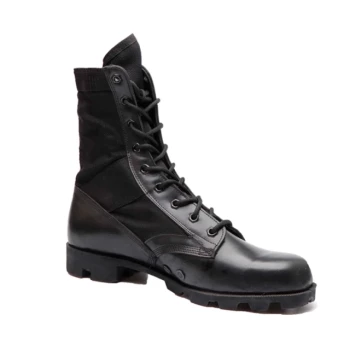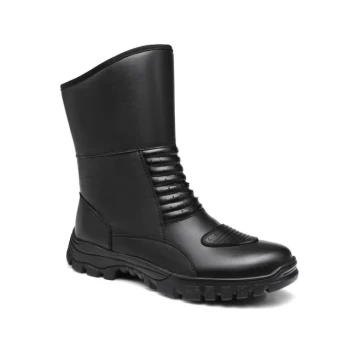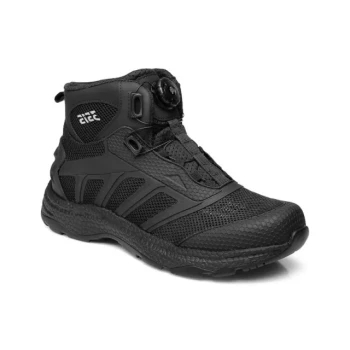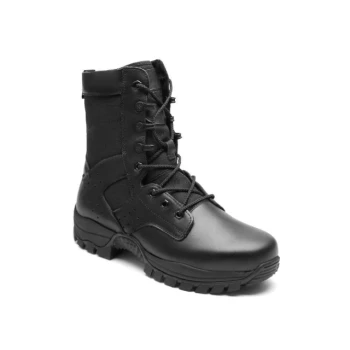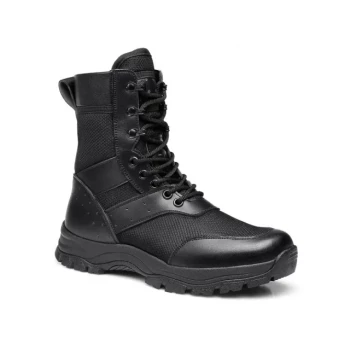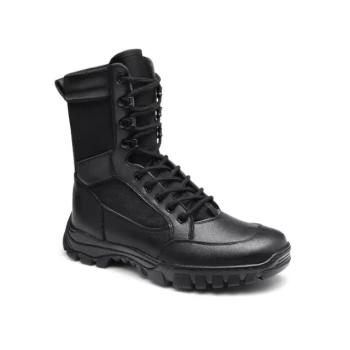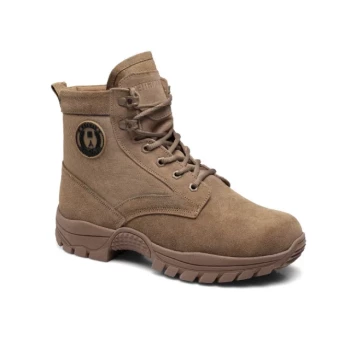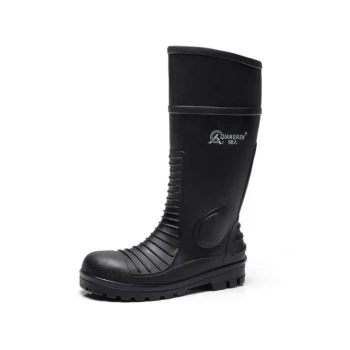In short, U.S. military boots have evolved dramatically from heavy, specialized all-leather designs suited for trench warfare to lightweight, versatile synthetic-blend boots designed for adaptability in modern, multi-environment conflicts like those in the desert. This change reflects a fundamental shift in military strategy, technology, and the demands placed on the modern soldier.
The evolution of military footwear is not merely a change in color or material; it is a direct reflection of a changing battlefield, moving from the static, singular environments of the past to the dynamic, unpredictable terrains of modern global operations.
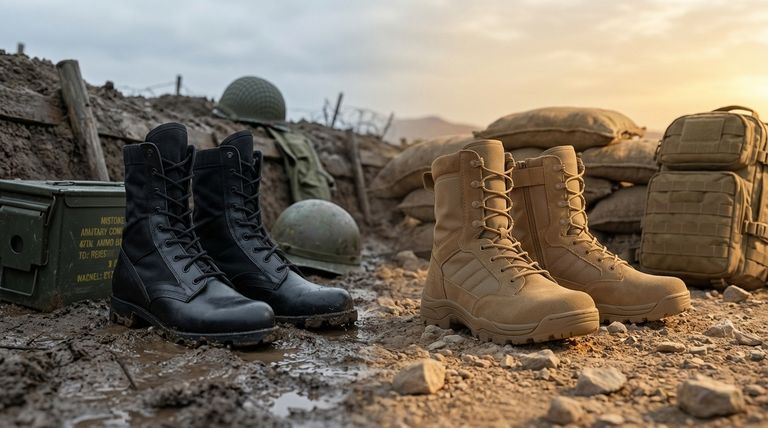
The Mid-Century Paradigm: Boots for Static Warfare
In the mid-20th century, the design philosophy for U.S. military boots was heavily influenced by European models and the realities of large-scale, conventional warfare.
H3: Built for Durability and Protection
Early designs, like the combat boots of World War II, were primarily all-leather. Their main purpose was to provide maximum durability and protection in harsh, specific conditions like the muddy trenches of Europe.
H3: The Era of Specialization
This period saw a focus on specialized footwear. Paratroopers, for example, wore distinct jump boots with high lacing and reinforced ankle support, a design completely different from the standard-issue infantry boot. This approach required a more complex supply chain.
The Modern Shift: Versatility for a New Battlefield
The turn of the 21st century marked a significant pivot in boot design, driven by new conflicts and advancements in material science.
H3: The Rise of Desert Operations
The most visible change was the transition to tan-colored boots around the 2000s. This was a direct response to the operational needs of modern warfare, which frequently took place in arid and desert environments where black leather was impractical.
H3: A Fusion of Advanced Materials
Modern combat boots are rarely all-leather. They are engineered from a blend of leather, suede, and synthetic materials like nylon. This combination offers a superior balance of durability, light weight, and breathability that leather alone cannot match.
H3: From Specificity to Adaptability
Instead of creating different boots for every possible environment, the modern goal is a single, versatile boot. Today's footwear is designed to perform reasonably well across a variety of terrains—from rocky mountains to urban streets—reflecting the unpredictable nature of modern deployments.
Understanding the Trade-offs and Driving Forces
This evolution was not accidental; it was driven by clear technological, strategic, and economic factors. The primary trade-off has been sacrificing maximum performance in one specific environment for good performance across many.
H3: The Impact of Technology
Advances in polymer and fabric technology made synthetic-blend boots possible. These new materials allow for features like enhanced water resistance, faster drying times, and significantly reduced weight, which directly reduces soldier fatigue.
H3: Logistics and Cost-Effectiveness
Issuing a single, versatile boot model is far more efficient and cost-effective for a large military organization. It simplifies manufacturing contracts, reduces the complexity of the supply chain, and ensures soldiers are adequately equipped for unexpected changes in mission or location.
H3: Focus on the "Tactical Athlete"
There is a modern understanding that the soldier is a "tactical athlete." The focus has shifted to preventing injury and enhancing performance. Lighter, more comfortable, and more supportive boots are a critical component of keeping a soldier mobile and effective on the ground.
How to Understand This Evolution
The history of military boots provides a clear lens through which to view shifts in military priorities.
- If your primary focus is technology: The key change is the move from a single natural material (leather) to engineered blends of synthetics and suede for optimized performance.
- If your primary focus is strategy: The evolution mirrors the shift from preparing for a singular, known battlefield (like Europe) to needing readiness for dynamic, unknown environments worldwide.
- If your primary focus is logistics: The trend is toward simplification and efficiency, moving from multiple specialized boot types to a single, cost-effective, "good enough for everything" solution.
Ultimately, the story of the U.S. military boot is a story of constant adaptation, mirroring the evolution of the soldier and the battlefield itself.
Summary Table:
| Era | Primary Material | Key Design Focus | Example Use Case |
|---|---|---|---|
| Mid-20th Century | All-Leather | Durability & Protection for Static Warfare | Trench warfare in Europe |
| Modern Era (21st Century) | Synthetic Blends (Nylon, Suede) | Versatility & Adaptability for Multi-Environment Conflicts | Desert and urban operations |
| Key Shift | Natural Material → Engineered Blends | Specialization → Versatility | Predictable Battlefield → Dynamic Terrain |
Ready to equip your personnel with modern, high-performance footwear? As a large-scale manufacturer, 3515 produces a comprehensive range of durable and versatile boots for distributors, brand owners, and bulk clients. Our production capabilities are informed by the very evolution detailed above, ensuring we deliver footwear that meets the demands of modern tactical and work environments. Contact our experts today to discuss your specific needs and discover how we can enhance your supply chain.
Visual Guide
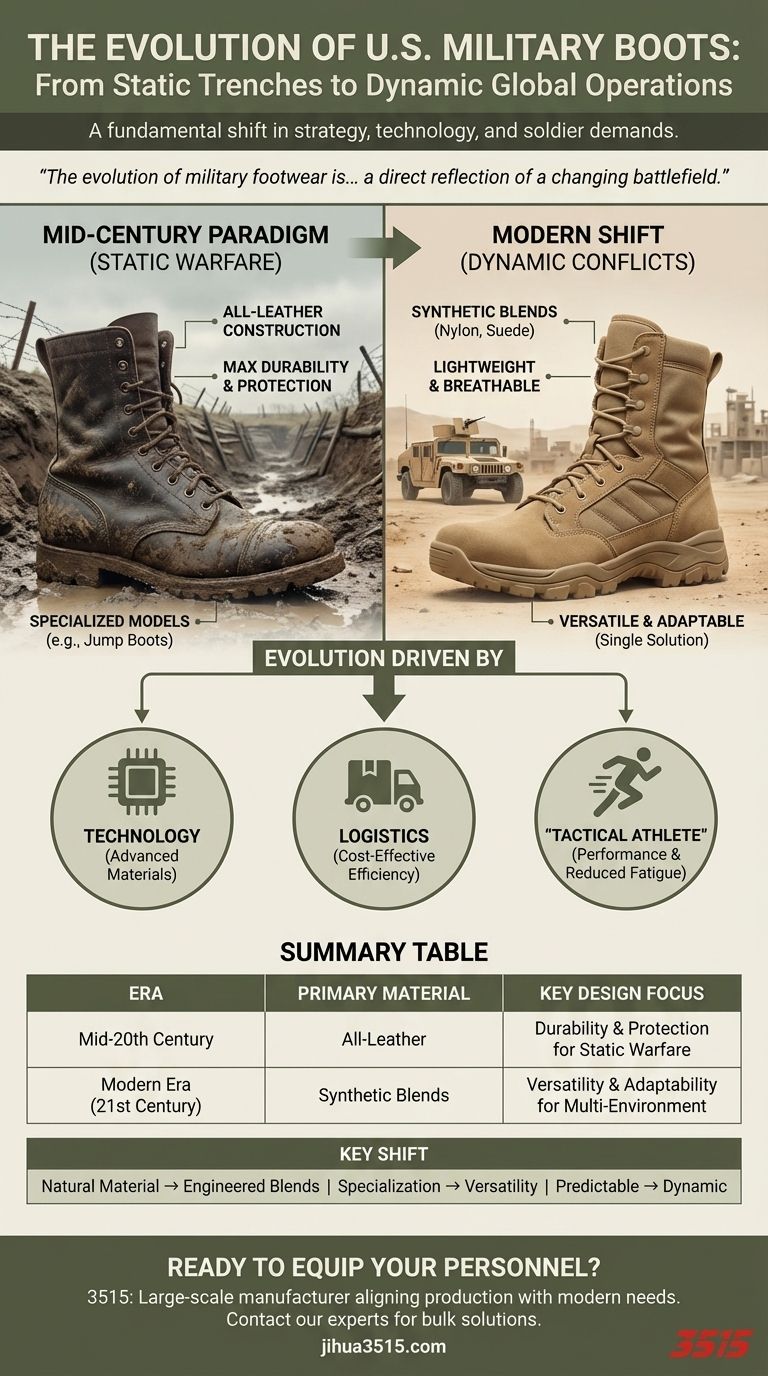
Related Products
- Durable Military Combat Boots with Water Drainage for Wholesale & OEM
- Wholesale Tactical Boots High-Traction & Reflective for Bulk & Brand Orders
- Wholesale Lightweight Tactical Boots with Dial Closure OEM & Bulk Orders
- Durable Leather Tactical Boots Wholesale & Custom Manufacturing for Brands
- Wholesale Waterproof Tactical Boots Custom Suede & High-Traction Soles
People Also Ask
- How can a shiny finish be achieved on military boots? A Step-by-Step Guide to a Mirror Shine
- What replaced jungle boots in the US military? The Shift to Tan Suede Combat Boots
- How did combat boots transition from military use to popular culture? From Battlefield to Fashion Statement
- What are the limitations of combat boots? Understanding the Trade-offs of Rugged Footwear
- What are military boots designed for? Unmatched Durability & Protection for Extreme Conditions
